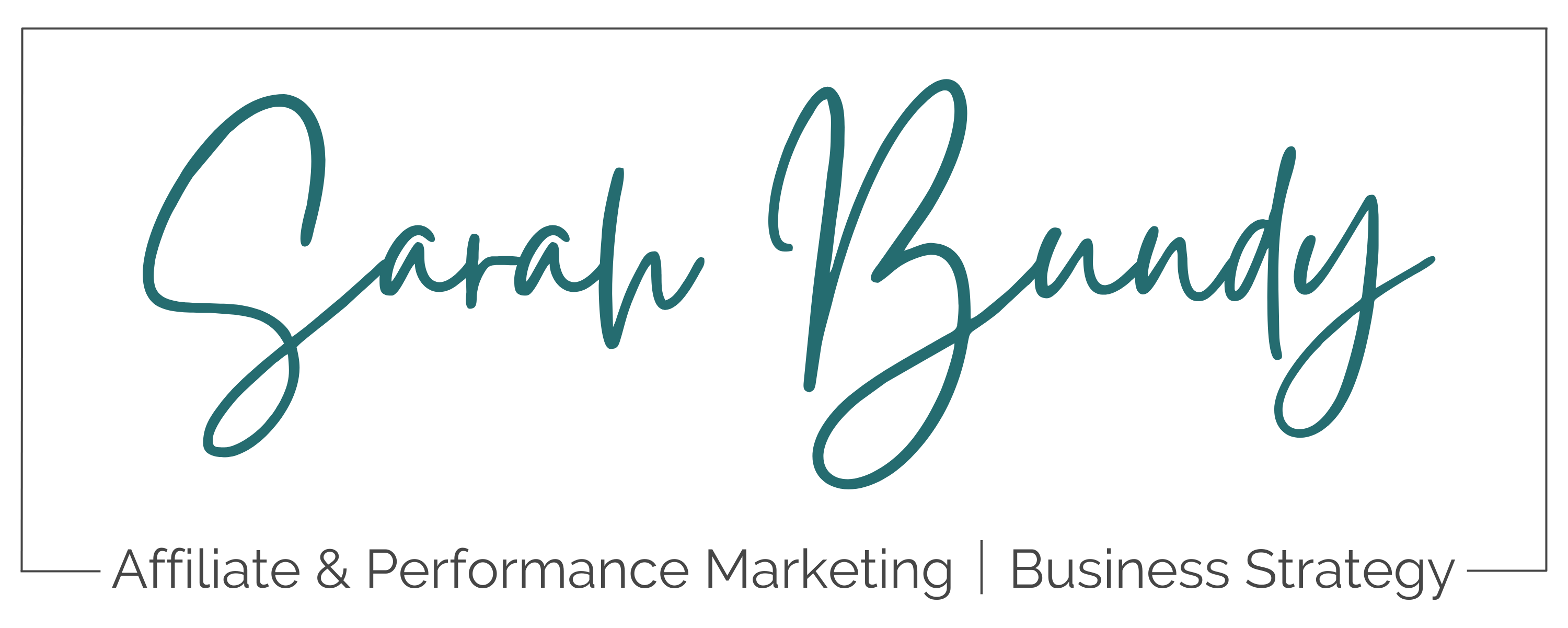An SEO Expert’s Commentary on “Affiliate Marketing Strategies for a Post Penguin World”

In January 2013 I had the honor of speaking at Affiliate Summit West 2013 with my good friend Kush Addolloev of VMInnovations. Our topic was “Affiliate Marketing Strategies for a Post Penguin World” (YouTube Video will be posted here once live).
In the session we presented tips to affiliates on how to diversify marketing efforts, own audiences to extend the lifetime value of the end user, engage onsite and offsite for social interactions and much more.
At the end we had some great audience questions and although I did my best to answer many of the SEO questions myself, I struggled with some and asked my SEO expert to elaborate on and correct any comments he felt needed clarifying.
Here are the comments, commentary and elaborations from our SEO Expert, Jared Mumford, on how SEO truly affected affiliate marketing activities post penguin.
I said: “Another thing that used to work in the past …before Penguin. People could purchase keyword phrases as the domain name and that would give them a lot of girth in the search engines, they would get pushed to the top.”….”After Penguin updates happened, that is no longer relevant…”
Jared’s Comments: It was actually the EMD update (Exact Match Domain) in September 2012 that affected exact match domains. (Note from Kush: which happend post Penguin, the slide about keyword rich exact match domains not being a viable long term strategy was added to the deck.)
Me: I mentioned not to worry about getting keyword combinations and keyword phrases in the domain name, because they didn’t have any relevance anymore.
Jared’s Comments: Not exactly accurate as the EMD update affected exact match domains with low quality content. Many sites that had excellent content or reworked their content to be unique and insightful (low bounce, high ATOS, all unique) kept their positioning or quickly recouped positioning and traffic.
It’s still risky to buy an exact match domain, however getting some keywords in your domain still seems to help elevate positioning quicker and therefore indicates that keywords in your domain is still relevant for ranking (e.g. www.blueribboneyewear.com). The caveat of course, is that algorithms are constantly being updated, so if you are buying a domain with a keyword for the purpose of getting better (or faster) positioning, you are in essence gaming the search engines, which is exactly what newer updates are meant to combat.
Therefore, in the future, your site may be measured with more stringent criteria than a site that has a brand based domain. In any event, having a keyword in your domain may well become completely “irrelevant” in the future, at which point brand based domains will probably be the biggest winners. Brand signals play an important role in positioning, so buying a brand based domain paired with high end content marketing and social engagement is probably your best bet for long term positioning.
Additional note from Kush: In the past, it was relatively easy to rank for a particular keyword or phrase if the website had those keywords in its URL – also known as EMD’s or Exact Match Domains, this is no longer a viable strategy. Sites that are specifically looking for shortcuts to rank their pages higher than they deserve to be ranked sooner or later will be penalized.
Audience Question: “I’m still ranking really high on sites that have the exact domain – so what you’re saying about having good content is important but it….still really helps [to have an EMD].”
Jared’s Comments: As mentioned above, not all exact match domains were affected and having keywords in your domain does still help. If you had an EMD that had duplicate content, thin content, spun content etc than the EMD might have affected your website. It’s important to mention that EMD websites that were hit in September / October may not necessarily have been affected by EMD as there were other refreshes at that time.
I said: “…guys who would have diversified {their marketing channels], still would have been generating traffic [post Penguin] from each of these different channels, and Google wouldn’t have dropped them…”
Jared’s Comments: Somewhat true. If a website has a lot of positive signals coming in such as community engagement, social media signals, content marketing and so on, those signals might dilute key indicators of Google Webmaster Guideline violation that would otherwise be flagged by the updates. For example, if a website SEO channel has been acquiring a high number of backlinks using the same anchor text, those might get diluted with incoming links from other channels and therefore ‘pass’ the algorithm and avoid a manual penalty. However, a website using multiple channels can still be (and many were) affected by Penguin. The result is that they lost their SEO / Organic traffic but maintained traffic from their other channels.
Kush said: “[On Raventools] It basically helps me track search engine rankings and see what else is going on…” like search term tracking, competitor’s backlink checking, affiliate site reviews etc.”
Jared’s Comments: As of January 2, 2013 Raventools officially removed their SERP tracker as part of their tools suite. It is still a very good tool for organizing and tracking outreach and backlinks.
http://raventools.com/blog/scraped-data-serp-tracker/
Audience Question: “So let’s just say that you’ve gotten yourself in this position where you have a bunch of keyword backlinks out there by the hundreds….is there a method to actually let Google know that they are there and you just want to disassociate yourself?”
Jared’s Comments: Yes, it’s called the Google Disavow Links Tool (https://www.google.com/webmasters/tools/disavow-links-main), and it was created after many webmasters and SEO’s complained that certain links from bad neighborhoods could not be removed because the website had been virtually abandoned. However, Kush raises a good point: if you have a manual penalty (Did you get an email in Webmaster Tools telling you that you have unnatural backlinks?) then you need to show that you made an effort to get links removed before using the disavow tool. You will not get accepted for reconsideration by just disavowing all bad links and submitting the spreadsheet to Google.
Audience Question: “So when she did that (changed her domain), did she have to do a lot of 301 redirects?”
Me: I replied she did in the beginning, until she could find somebody who could actually correct the URLs to be back at what they were before. The real answer is:
Jared’s Comments: 301 redirects are ‘permanent’ redirects, meant to change the URL of a page for good or not ‘temporarily’. What would normally happen here is the person would either try and get the WP site URLs to match the old URLs and for those URLs they can’t ‘match up’, have the old URL point to the new URL. This is just SEO best practices for URL structure changes. As for Penguin involvement it gets much more complicated and depends on a lot of elements including the backlinks to that landing page. [more below]
Audience Question: “Say you have one page on your site, and you know that page has been dinged, so you delete that page and 301 redirect it to another page that’s brand new. That helped in rankings for 2 days but then it fell back in rankings, but overall, I’m wondering if that isn’t a good strategy.”
Jared’s Comments: In relation to Penguin, if Penguin was affecting pages on your website and you decided to 301 redirect those pages to newly created ones, you are not dealing with the core issue. The fact that you temporarily ranked well and then dropped signifies just that. If the issue is related to on page gaming techniques like keyword stuffing, fixing those issues on the original page is a better bet than creating a new one (especially if that page has a good backlink profile). However, if the drop in rank is related to a poor backlink profile, 301 redirects will not hide those backlinks from Google – Google can still see them. And while there is ongoing debate on how much link juice passes through a 301 (and therefore begs the question ‘do penalization signals pass 301’s at full strength?’ as well), the bottom line is that the backlink issue still needs be addressed.
Audience Comment: “They had a website that doing well, ranking well, and they created a subdirectory [sic] and called it new.domainname.com …every page was brand new, and they didn’t suffer at all in Penguin.”
Jared’s Comments: She means subdomain, not sub directory. There is not enough information here – did they create the subdomain and keep their existing domain up? Were the two sites duplicated or unique? So many elements here are not explained and therefore it’s impossible to suggest a reason they were or were not penalized.
All in all the session got 8/10 for both content and delivery. Here are a few comments from attendees who filled out the surveys at the end of the session:
“Great content, you really engaged the audience!”
“Valuable and important info on Google Panda & Penguin Updates and how to avoid the penalties”
“Very relevant and helpful presenter content”
“Very encouraging! Diversify seem to be the strength for the future instead of just focusing on keywords. I’m new and this helped me re-focus on how and what drives traffic. Thank you!”
So now I turn the question back to you. What have your experiences been since the Penguin Updates? What affiliate marketing strategies have you found to work well despite Google’s constant changes? Would love your feedback on what’s worked well for you in a post penguin world!
